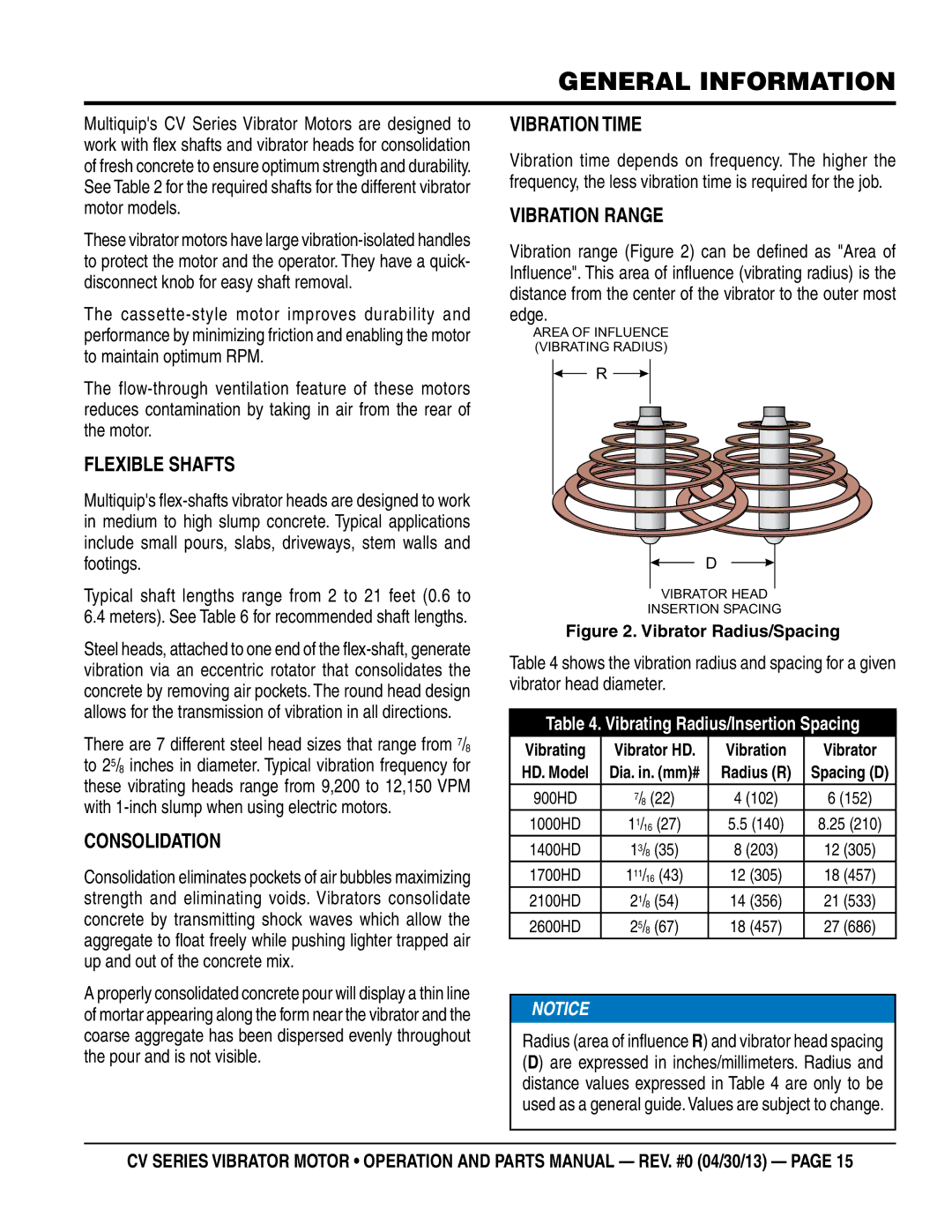CV3A/3B, CV1A, CV2a/2B specifications
Multiquip has established a strong presence in the construction and equipment rental industries with its versatile range of products, including the CV2A/2B, CV1A, and CV3A/3B concrete vibrators. These models are designed to enhance the efficiency and quality of concrete placements, making them essential tools for contractors and construction professionals.The CV2A and CV2B are two models that stand out due to their user-friendly design and powerful performance. Both models feature a robust 1.5 HP electric motor that delivers consistent vibration to ensure uniform consolidation of concrete. The CV2A model is equipped with a 10-foot shaft, while the CV2B provides a longer 12-foot shaft, making them suitable for a variety of applications, from small to large pours. The ergonomic handle and lightweight construction allow for easy maneuverability, reducing operator fatigue.
The CV1A, on the other hand, is a more compact option that excels in smaller job sites and tight spaces. It features a 1 HP motor and a 6-foot shaft, making it perfect for residential projects and delicate applications. Its simple, straightforward controls make it easy for operators to achieve optimal vibration levels without extensive training.
For larger-scale operations, the CV3A and CV3B vibrators deliver unparalleled performance, capable of handling substantial concrete loads with ease. Both the CV3A and CV3B feature powerful 2 HP motors and longer shaft lengths, with 10 feet for CV3A and 12 feet for CV3B. These models are designed for heavy-duty applications, making them ideal for commercial and industrial construction projects.
One of the standout features across all these models is their durable construction. Built with high-quality materials, they can withstand the rigors of daily use on construction sites. Additionally, the vibrators are designed with maintenance in mind, featuring accessible components that streamline upkeep and repairs.
Furthermore, Multiquip's focus on safety is evident in these models, which include protective features to prevent overheating and electrical overloads. This commitment to safety, combined with their powerful performance and innovative design, makes the Multiquip CV2A/2B, CV1A, and CV3A/3B concrete vibrators reliable choices for any concrete-related task, ensuring solid results and increased productivity on the job site.

